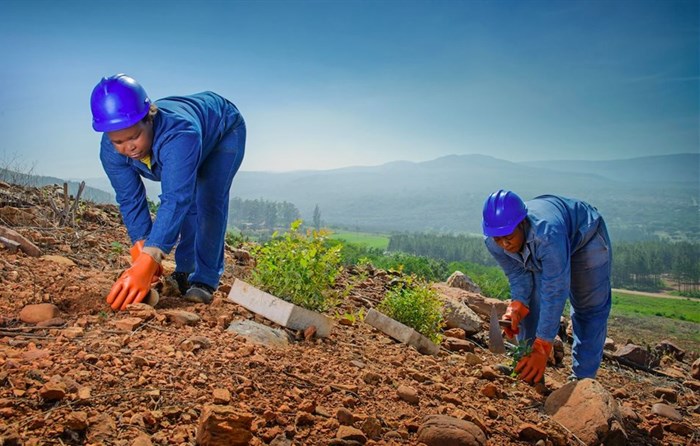Sappi Forests: Providing tangible and practical support for the SDGs

This year’s theme for congress – which is held every six years – was ‘Building a green, healthy and resilient future with forests’, aimed at showcasing the essential role of forests in the global sustainable development agenda. Duane spoke to the sub-theme Managing forests for the SDGs: Creating value, equality and resilience from forest products and ecosystem services.
Speaking on behalf of commercial forestry in South Africa, he set the scene by explaining that the South African landscape is not dominated by trees, and that indigenous forests are highly fragmented, with many trees under threat in certain areas, as they are utilised for building material, fuel and traditional medicine. Historically, these forested areas cover about 0.530 million hectares (ha) or only 0.5% of South Africa’s total land area.

Industrial forests, on the other hand, cover 1.3 million ha or about 1% of South Africa’s landmass. In the absence of significant natural afforested areas. These pinus, acacia and eucalyptus plantations were established on grassland (not suitable for agriculture) from 1900 onwards to service growing woodfibre needs. Today, South Africa’s plantations directly employ 170,000 people, supporting a further 700,000 South Africans. They also sequester an estimated 203 million tonnes of CO2e annually.
In keeping with the theme of the discussion regarding how forests can be managed to advance the SDGs, Duane pointed out that Sappi’s Khulisa small grower scheme empowers people along the full forestry value chain, from those growing trees to harvesting and transport contractors, while playing a key role in providing a steady supply of quality timber to Sappi. This is an excellent example of SDGs in action – SDG8: Decent Work and Economic Growth and SDG1: No Poverty.
“It is evident that commercial plantation forestry makes a quantifiable difference in an environment where natural forestry is constrained. This is achieved not only by improving degraded land and sequestering carbon, thereby advancing SDG13: Climate Action and SDG15: Life on Land, but also by becoming a key anchor tenant in the rural space and driving the circular economy. By collaborating with commercial entities like Sappi, these forestry value chain participants are at the heart of our purpose of creating a thriving world, and in the process, the targeted SDGs that Sappi has prioritised are being supported and realised in a practical, tangible manner,” he said.
To review the full discussion with contributions from global role-players in the forestry industry, click here.
For more information on how Sappi supports the SDGs through various interventions and tangible examples, view our Sappi Southern Africa Corporate Citizenship report here.
- Wits and Sappi renew forestry partnership to boost climate resilience08 Dec 15:54
- Sappi TuksRace - 90 days to the ultimate new year challenge19 Nov 15:49
- Sappi reports Q4 and full-year 2025 financial results10 Nov 13:29
- Sappi recognised in Forbes' World’s Best Employers and Top Companies for Women rankings for 202517 Oct 08:28
- Celebrating Arbor Month: Sappi’s commitment to indigenous forests08 Sep 14:40
















